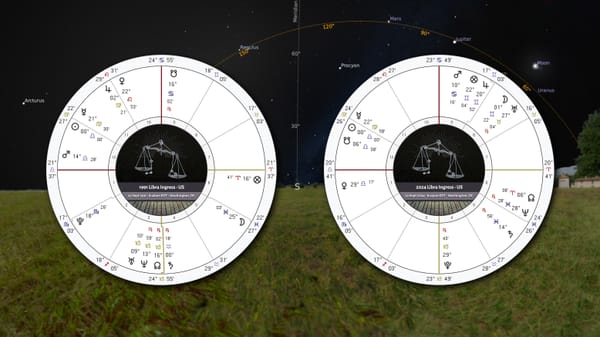Astrology of a military cemetery
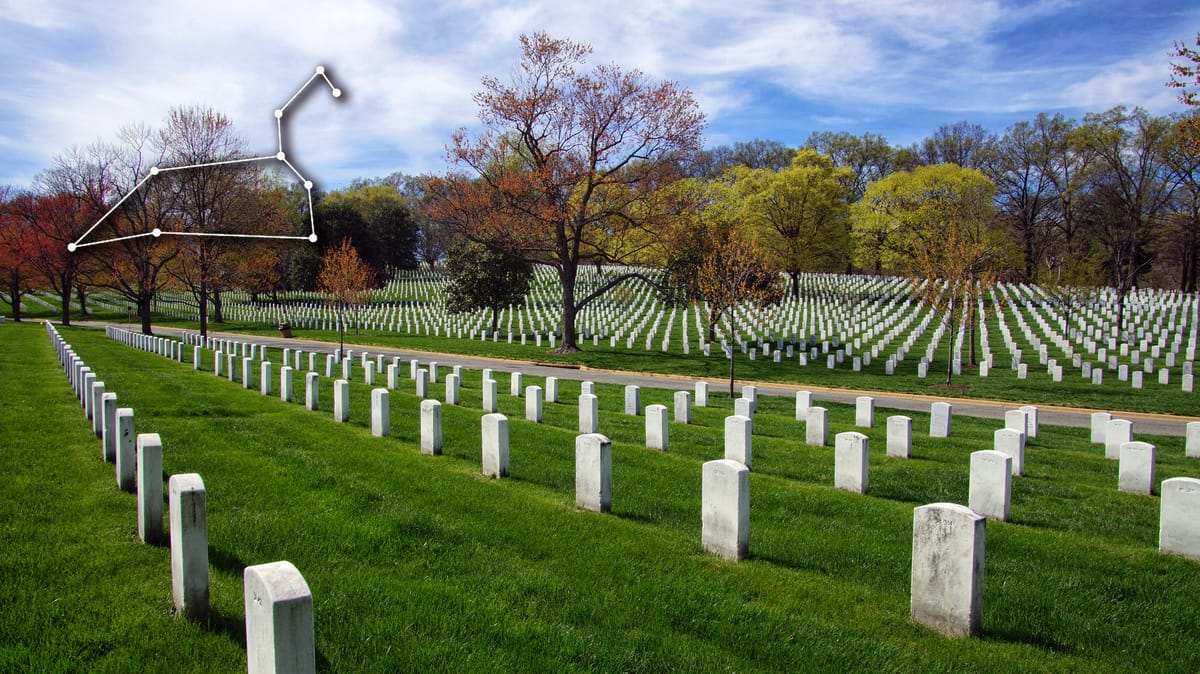
I recently decided to re-watch House of Cards. It's one of those unique viewings centered around the story's bad guys, the antagonist (Francis J. Underwood) and deuteragonist (and his wife, Claire Hale Underwood). I just re-watched an episode that featured Arlington National Cemetery, a place I remember from my childhood and from stories about mourning, war, and national burials venerating fallen soldiers.
Watching the episode, a thread of curiosity found me, and chasing it, I was whisked away. I began reading about the development of this land and Arlington House from cultural landscape reports published by the National Parks Service, tracing its path toward becoming a national cemetery.
The land on which the cemetery sits was originally owned by George Washington Parke Custis, the adopted grandson of President George Washington. Custis built Arlington House on the property, which was later inherited by his daughter, Mary Anna, who married General Robert E. Lee.
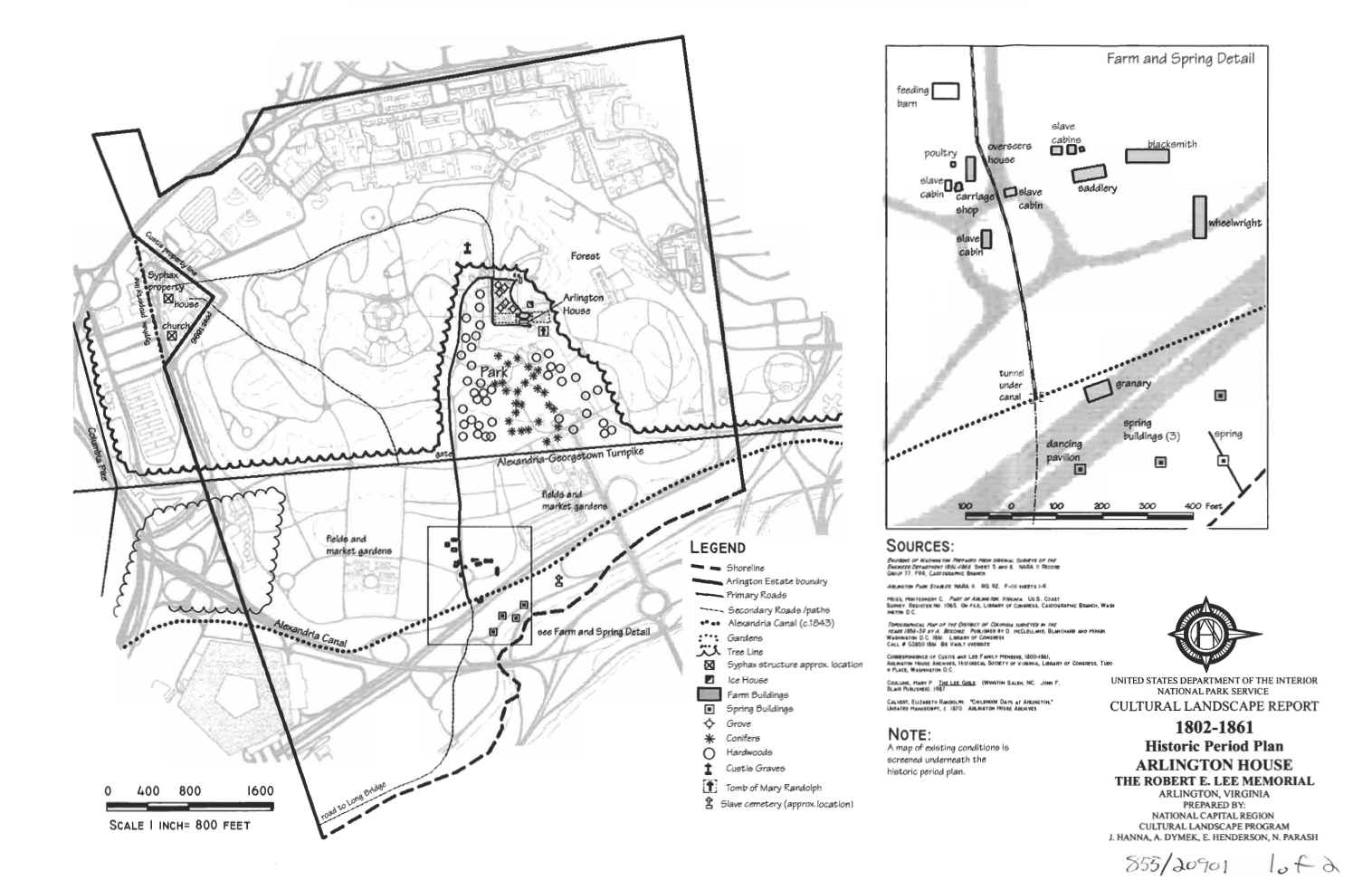
After the onset of the American Civil War, Union generals ordered Arlington and Alexandria, townships adjacent to Washington, D.C., to be cleared of Confederate forces. A Virginia militia loyal to General Lee and the Confederate cause captured Arlington House. Fearing that she would be forced out by Union soldiers within days of the house's capture, Lee's wife had fled the premises. The Union Army swiftly seized the land without contest, recognizing its strategic geopolitical importance.
As the war progressed and the number of casualties increased, the government began utilizing the property as a burial ground for fallen soldiers. The first military burial at Arlington National Cemetery took place on May 13, 1864, for Private William Christman of the 67th Pennsylvania Infantry. Christman, a farmer by trade, never saw battle himself; he contracted measles and died before he could be brought to the front lines.
While I have been unable to track down an official time for Christman's burial, the lunation preceding the cemetery's establishment shared poignant signatures for the somber remembrances that would come under its auspices.
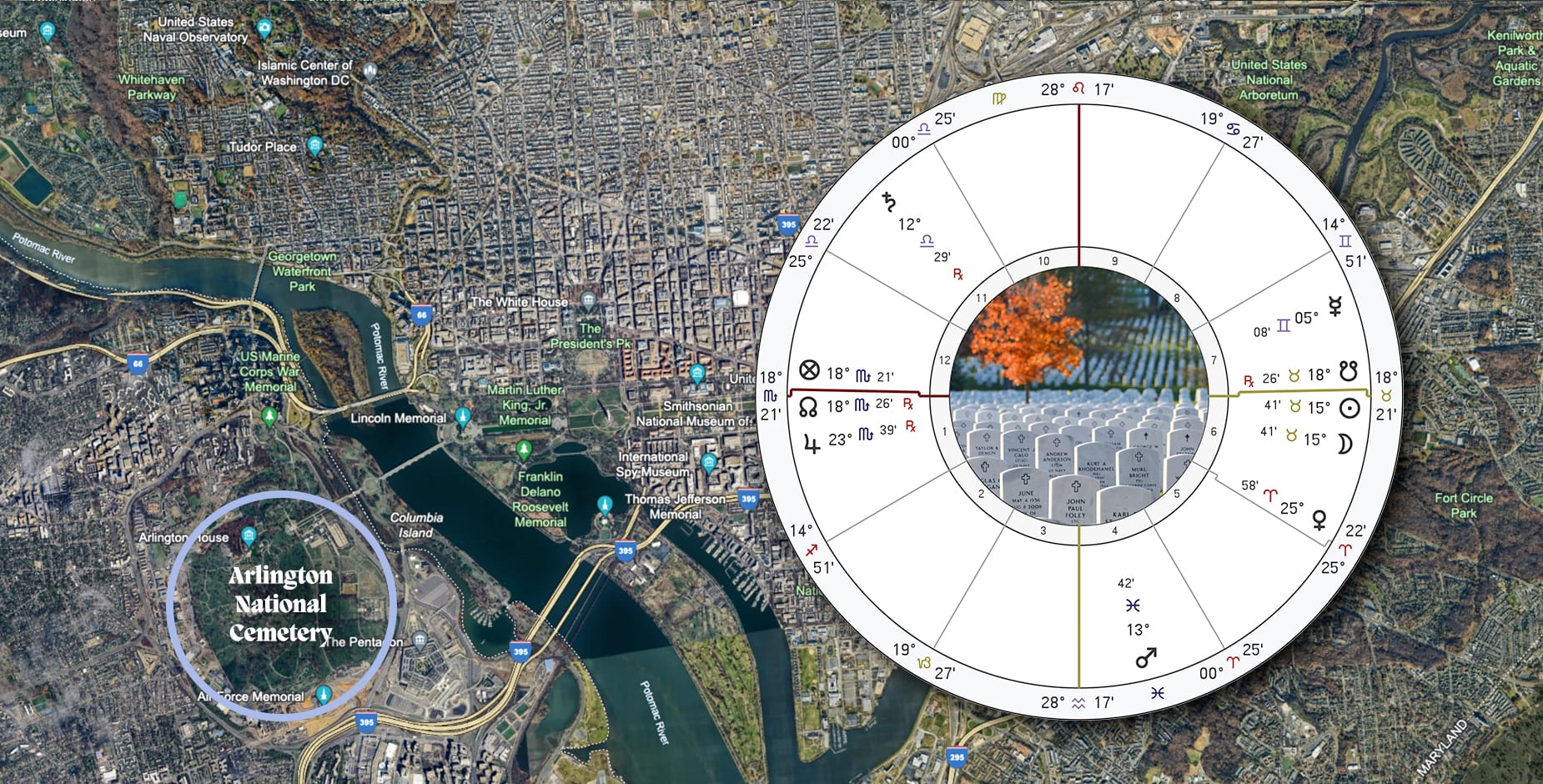
The lunation preceding Christman's burial was a solar eclipse at 15° Taurus. As a farmer, Christman may have been one of many manifestations of the earthy, agrarian nature of Taurus, a sign long associated with the cultivation of land. The eclipse on the South Node, descending over the western horizon in Arlington, painted a perfect image for honoring the dead – the Sun and Moon setting together, falling away into lightless places.
The 4th house was ruled by Saturn, the natural significator of the dead, mausoleums, graveyards. Mars, the planet of war, resides in this house, designating this final resting place as a burial ground for fallen soldiers. The segregation of Arlington Cemetery until the mid-20th century is reflected in Mars' placement in Pisces: Mars in mutable signs shows the division of soldiers into different areas of the land.
Aquarius on the cusp of the 4th house highlights the cemetery's unique topography, jutting out from the surrounding landscape atop a hill – a strategic vantage point during wartime. A planet in Pisces in the 4th house describes the cemetery as close to a river or body of water: the Potomac.
Scorpio rises in this chart, a sign associated with warfare. Roman astrologer Manilius (c. 10 AD) wrote, "the Scorpion creates natures ardent for war and active service" (Astronomica, 4.217-229). Jupiter, retrograde in Scorpio, ascends, brings to this chart a desire to find meaning, and to venerate those who have met unfortunate ends in battle. As the ruler of the 2nd house (armies and military resources in mundane astrology), Jupiter's placement reinforces the martial theme already woven throughout the chart. As the Sun and Moon apply to Jupiter by opposition, positioned on the angles, they bestow honor, glory and attention upon the departed.
Regulus, the heart of the lion, culminates upon the midheaven, a star long associated with warfare and military endeavors. The 20th-century astrologer Vivian Robson once noted that Regulus brings "[h]onor, preferment, good fortune, high office under Government, military success" (Fixed Stars and Constellations in Astrology, 196). The Sun, ruler of the midheaven, sets in the west, eclipsed – a poignant symbol of the fall, honor, and glory of those who have given their lives in service.
Mercury, ruler of the 8th house of death, descends over the western horizon, visible to the naked eye and placed in its own sign. This may intimate the "finding of proper place" for the burial of the dead.
Private William Christman was born on 1 October 1844. His Venus was near the midheaven of this chart at 22° Leo, his Mars at 19° Virgo, his Sun at 8° Libra, his Moon transiting his natal South Node in the early degrees of Gemini. This biwheel shows the stunning overlaps between his nativity (shown in the outer wheel), and a noon chart for the date of his burial (shown in the inner wheel).
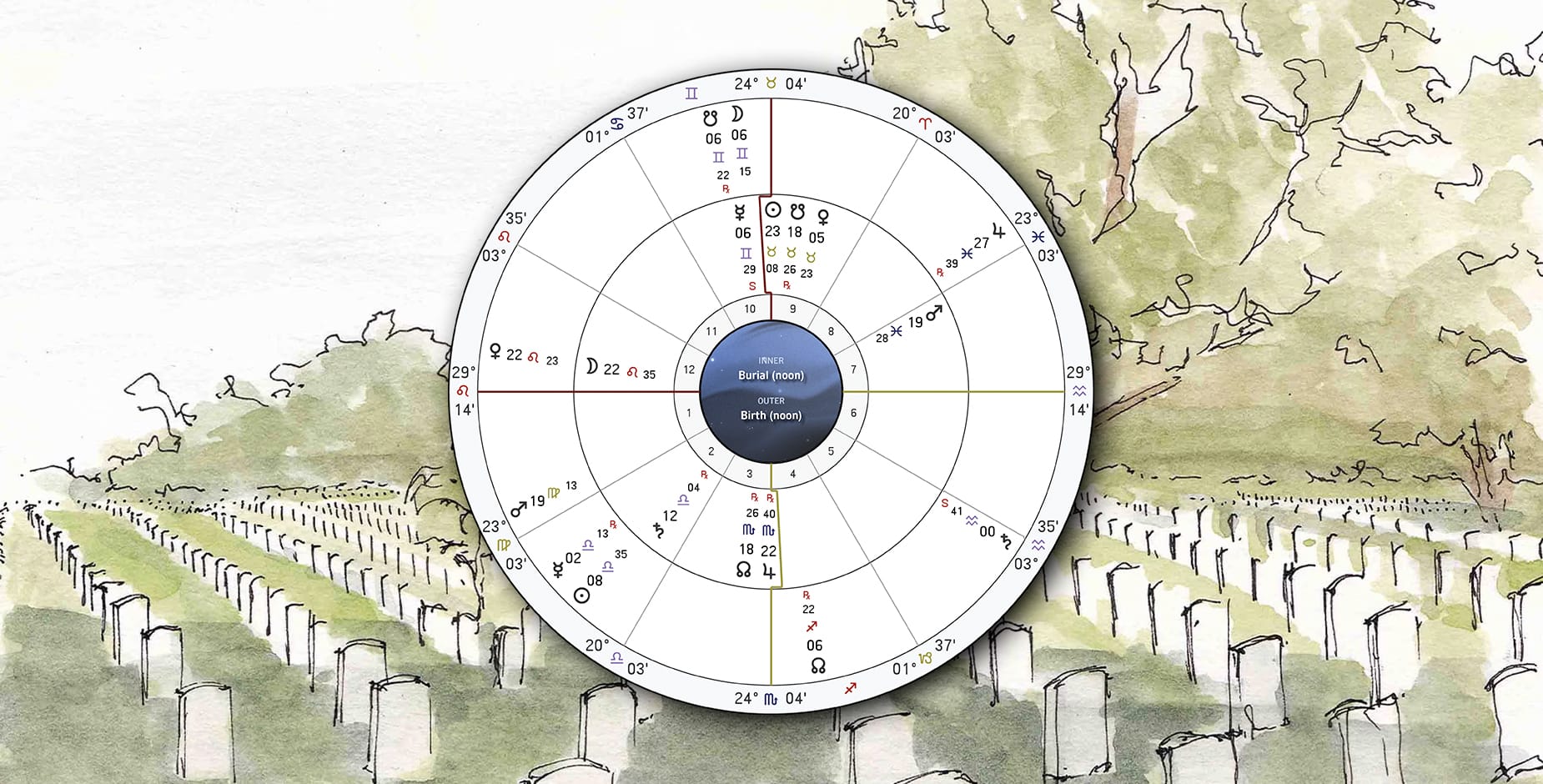
Transiting Mars was in direct opposition to his natal Mars, degree for degree. His natal Sun was on the burial's transiting Saturn, and his Moon transiting over Mercury which had just turned retrograde.


